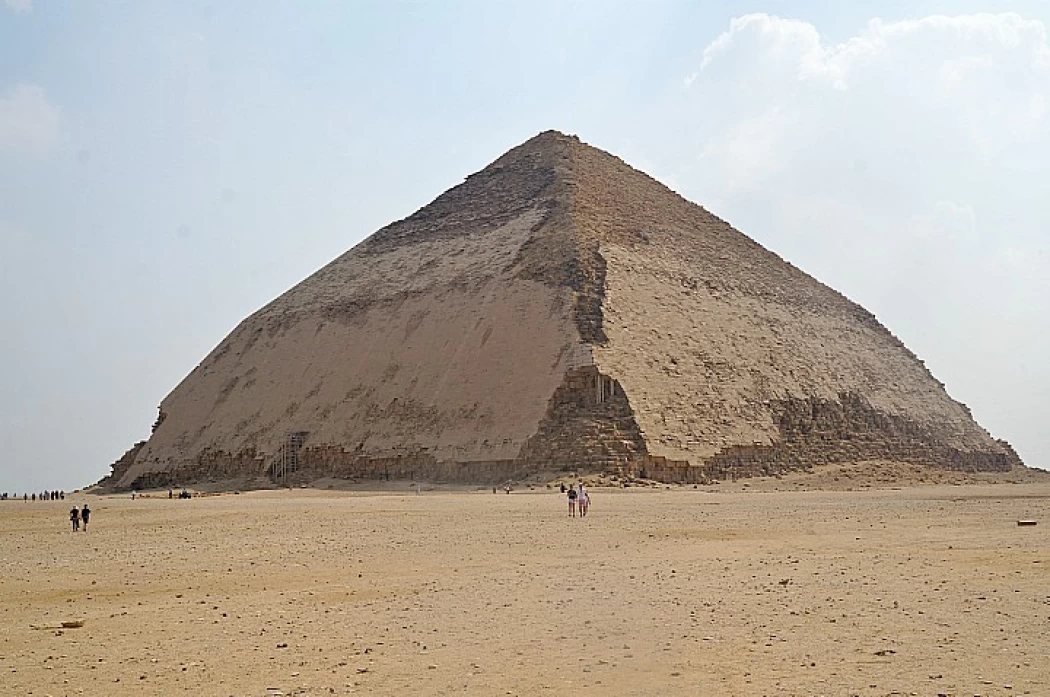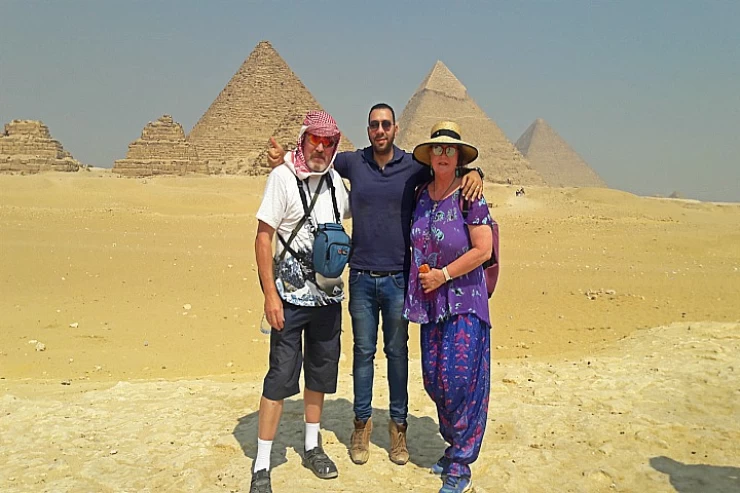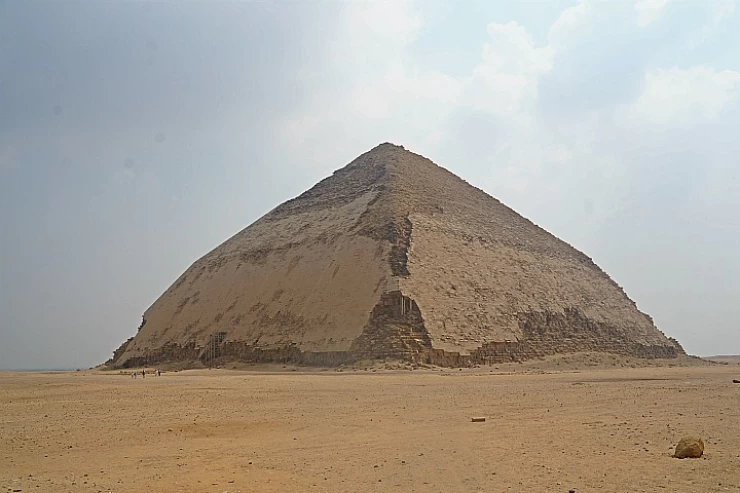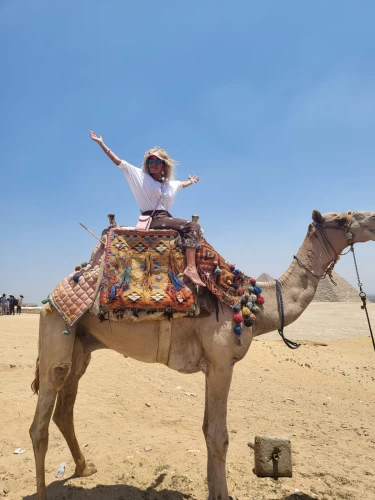
Dahshur Archaeological Site | Pyramid of Amenemhet III
Dahshur is a remarkable destination near Cairo that can be included in standard Cairo Day Tours. During the exploration of Dahshur and its pyramids, archaeologists uncovered the remnants of seven pyramids, which served as tombs for queens and nobility from Memphis, dating back to the 13th Dynasty of the Middle Kingdom. The archaeological site of Dahshur features the last two pyramids built in the area, which have succumbed to the passage of time, including the Black Pyramid from the 12th Dynasty, which is significantly eroded. Visitors can explore the pyramids and numerous other archaeological sites in Cairo through one of Egypt's luxury tours, which offer accommodations in premier hotels and Nile cruises. Alternatively, for those on a tighter budget seeking to optimize their time and expenses, a variety of affordable Egypt tour packages are available. Additionally, for individuals who have experienced an accident and are dealing with physical injuries, our professional operators provide a selection of wheelchair-accessible tour packages in Egypt, equipped with accessible vehicles and facilities for individuals with disabilities, which is a key feature of our classic tours in Egypt.
Dahshur is renowned for housing two of Egypt's most well-preserved pyramids. Constructed during the reign of King Sneferu, the founder of the 4th Dynasty, the Bent Pyramid and the Red Pyramid serve as significant indicators of the architectural advancements that ultimately culminated in the creation of the Great Pyramid of King Cheops and the subsequent pyramids of his immediate successors at Giza. The Bent Pyramid represents the initial construction effort at Dahshur under King Sneferu. It marked the ancient Egyptians' first endeavor to create a smooth-sided pyramid; however, errors in the distribution of the cut stones resulted in an incorrect angle, leading to its designation as "The Bent Pyramid." This structure was never utilized by the king, who promptly embarked on a more ambitious project. When visiting Dahshur, tourists will find that their experience extends beyond mere photography, as they will have the opportunity to explore both of King Sneferu's remaining burial sites, the Red Pyramid and the Bent Pyramid. King Sneferu subsequently commissioned the construction of the second pyramid at Dahshur, known as the Red Pyramid, applying lessons learned from previous errors. Upon its completion, this pyramid was deemed a success, featuring a fully constructed, smooth exterior and reaching a height of 104 meters. The Red Pyramid derives its name from the red limestone used in its construction and is believed to serve as the final resting place of King Sneferu.
Following the death of King Sneferu, his son Khufu initiated the construction of the third pyramid, which would become known as The Great Pyramid of Giza, recognized as one of the seven wonders of the world.
Numerous tombs belonging to royal women have been discovered in proximity to the pyramid, dating back to the 12th Dynasty, and these tombs contained a significant quantity of jewelry, showcasing the pinnacle of metalworking in ancient Egypt during that era. The pyramid of Senusret III is accompanied by smaller pyramids dedicated to royal women. Extensive cemeteries for officials from both the Old Kingdom and the Middle Kingdom have been unearthed around the pyramids of Dahshur, which served as Egypt's royal necropolis during the reign of King Amenemhat II of the 12th Dynasty.
For those interested in understanding the construction of the Great Pyramids and exploring the myths surrounding them, there is a website that offers extensive information and visual resources. This platform provides insights into the methods used in the construction of the grand pyramids and shares intriguing narratives about them, enhancing your knowledge of Giza and its historical significance.
Dahshur Archeological Site, known to most, is situated on the Western bank of the Nile River, about 40 kilometers to the south of Greater Cairo, where it appears to draw less of the public’s attention compared to many of Egypt’s ancient sites. This exceptional site, which is less packed than the Giza Plateau, allows for a more personal understanding of the evolution of ancient Egyptian architecture. With some of the oldest and most distinct pyramids in the nation, Dahshur is proof of architectural innovation that used to exist before the making of the Great Pyramid.
The relative tranquility that Dahshur offers enables visitors to view these impressive edifices in a much more comfortable manner without falling into the unpleasant crush of other more popular attractions. Let us explain why this fascinating place should be included in your Egyptian tour program.
A Brief History of Dahshur
The relevance of Dahshur back to the Early Dynastic period, that is, the 4th Dynasty (circa 2613–2589 B.C.E.), during the reign period of Pharaoh Sneferu, who was the first ruler of the Old Kingdom of Egypt and Khufu’s father, the great pyramid builder at Giza. Known for his innovation in building structures, the Egyptian Pharaoh can be said to have used dahshur as his laboratory for the construction of pyramids.
This region has several pyramids, such as the bent pyramid and the red pyramid, both built for Sneferu the King of Egypt in the 4th Dynasty. Their shapes are quite interesting and differ from each other, resembling the stages of pyramid-building that developed to produce the famous pointed pyramids standing on the Giza plateau.
Near the Bent Pyramid is located the Red Pyramid, which is also a creation of Sneferu’s and is generally accepted as the earliest real smooth-sided pyramid ever built. This pyramid is named after the tinge of red that its limestone blocks have and is the third largest pyramid in Egypt with a height of 105 meters. Certainly impressive.
The Bent Pyramid may be said to be the best-known structure in Dahshur, and there is a good reason for this. The peculiarities of this pyramid lie in its shape that curves like a bend, with a miniature upward angle curve occurring at the halfway mark. It was first designed as a real pyramid with sharp surfaces at its sides, but the angle was changed halfway through the construction, most probably for the fact that there was a problem with the structure.
The Bent Pyramid rises in height to 104 meters and is sheathed in white limestone, which is largely well-preserved, giving a clear picture of what pyramids would have looked like when they were constructed. In the last few years, the Bent Pyramid has been the subject of much activity, and visitors have been allowed to view its inner chambers and labyrinth of passageways. Within, there are two tombs connected by a small hall lined with walls of limestone that still show the marks made by the chisels of the workers at the time.
a feat of engineering and a testament to the mastery of ancient Egyptian builders.
The Red Pyramid is notable for its nearly perfect smooth sides and the precision of its construction. Visitors are permitted to enter the pyramid and explore its interior, which includes a long descending passageway leading to three burial chambers. The pyramid’s acoustics and the faint scent of ancient stones lend a mystical atmosphere to the experience, offering an almost ethereal glimpse into Egypt’s distant past.
In addition to the pyramids erected by Sneferu, Dahshur further contains the Black Pyramid of Amenemhat III, which dates back to the Middle Kingdom period. Even though age has not spared this particular building, with its appearance now likened more to a dark, ruined lump than a pyramid, it still stands as an interesting relic of the architectural creativity that characterizes the area. In the first instance, the Black Pyramid was made with limestone and was buried in dark mud bricks, hence the background. It is believed the pyramid was built as a tomb for Pharaoh Amenemhat III, but it was not used for this purpose because it became unstable.
The Dahshur Necropolis: A Rich Tapestry of History
Dahshur's archaeological wealth is not limited to its pyramids. It is a very rich site that features a large cemetery filled with tombs, burial shafts, and other ancient structures that assist in understanding the ancient Egyptians’ views towards death. Many objects have been found on this site by archaeologists too, such as pots, ornaments, and instruments, some of which are kept in the Egyptian Museum in Cairo.
Dahshur in recent years was the subject of a number of archaeological campaigns that aimed at learning more about the area. The excavations opened more tombs and found more articles, which illustrated the way of life of the individuals who were born and buried within these grand constructions.
Accessibility and Location Dahshur is reachable by vehicle for a brisk one-day tour from Cairo. Most of the travelers traveling to Dahshur also make a visit to the neighboring areas of Saqqara and Memphis to make it a day full of ancient Egyptian history. The site is easily reached by car, and there are also organized tours that include transportation and a knowledgeable guide.
Tickets and entry fees are charged to these ancient wonders.
The introduction fee to enter the Dahsur site is quite minimal compared to that of the already congested pyramids at Giza. Entry is allowed not only to the Bent Pyramid but also to the Red Pyramid, enabling them to see the outside and the inside of these two ancient structures.
Best Time to Visit I think the most appropriate time for a tourist to visit Dahshur is in the cooler months of Egypt, which are from October to April. This is the season when there is moderate scenery that makes the exploration of the outdoor site and the climbing of the pyramids inside very interesting. Early visits are best to prevent exposure to excessive heat around noon and to have the site in low attendance.
What to Bring Light clothing and good walking shoes are advised as touring Dahshur involves a bit of walking and the inside of the pyramids is sometimes sloping steeply. Carry water and sun cream and preferably a torch if you are going to the chambers inside the pyramids because they are not always well-lit.
Guided Tours A visitor to Dahshur can, however, decide to visit the area without a guide, but it is highly recommended that an experienced guide be hired. A visitor may not only learn the history and importance of the pyramids and the site from the guide but also learn how to move within the pyramids themselves.


















